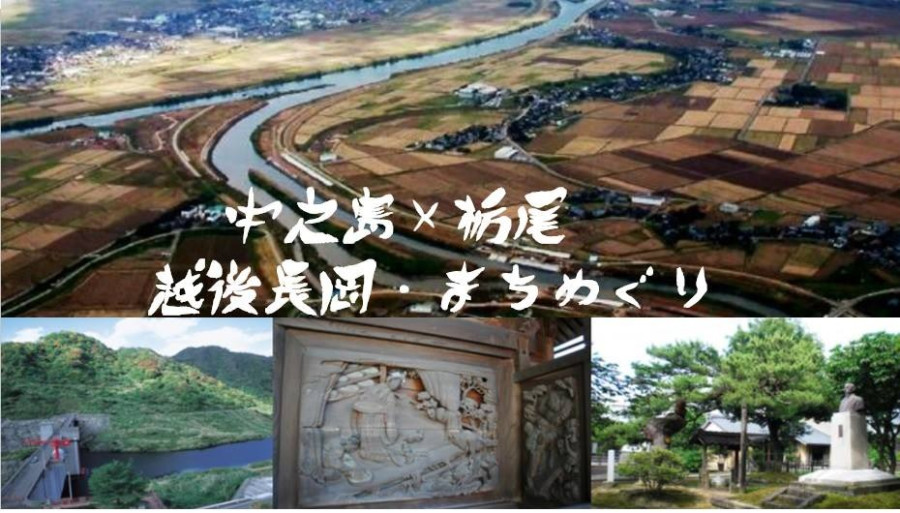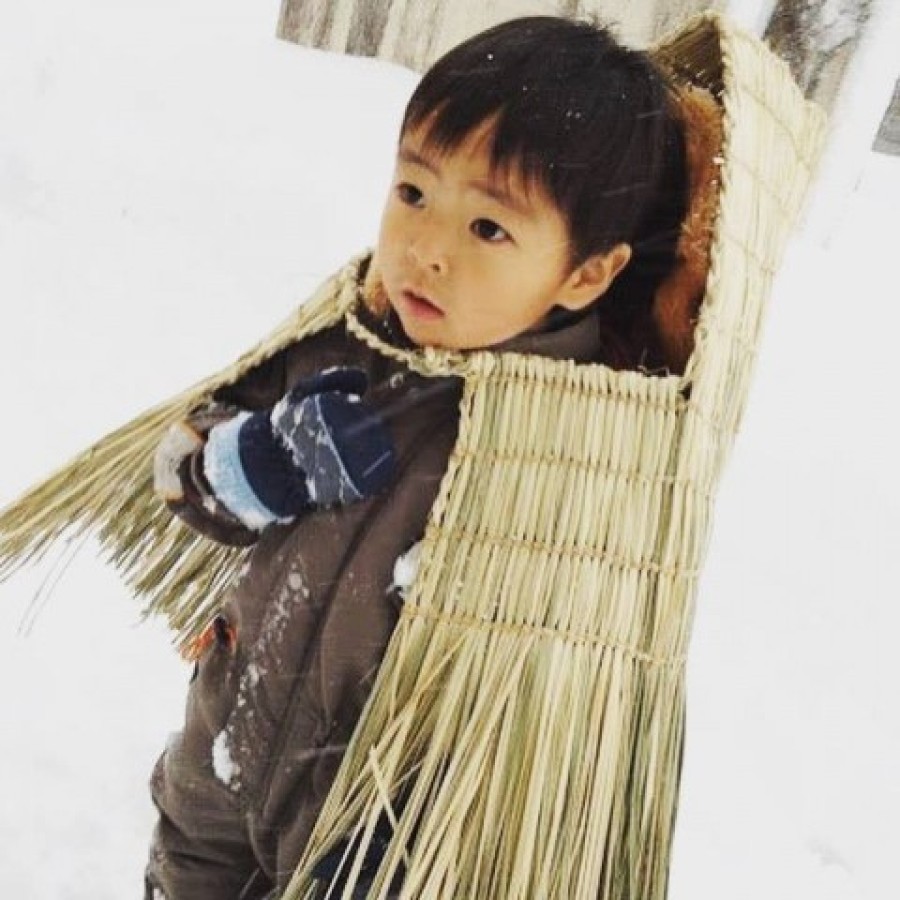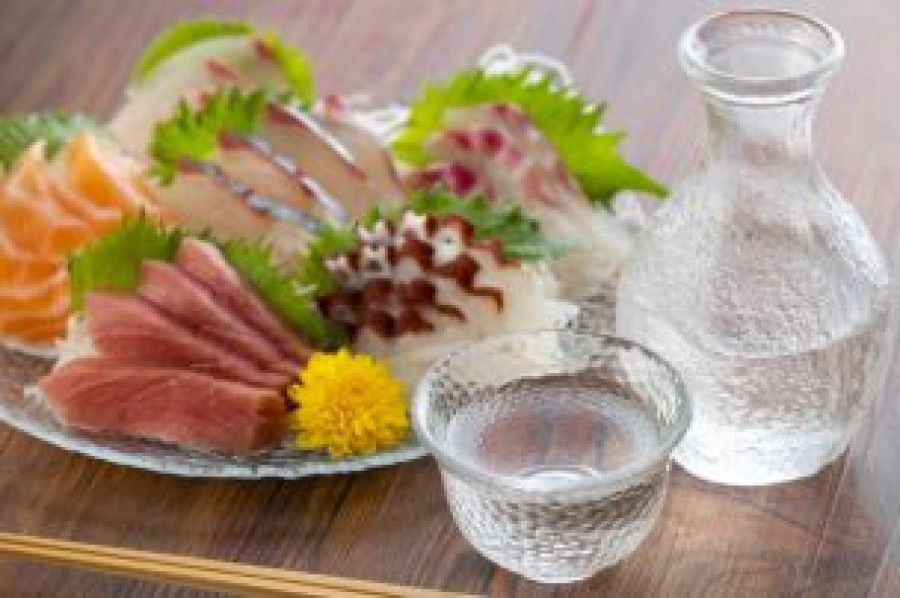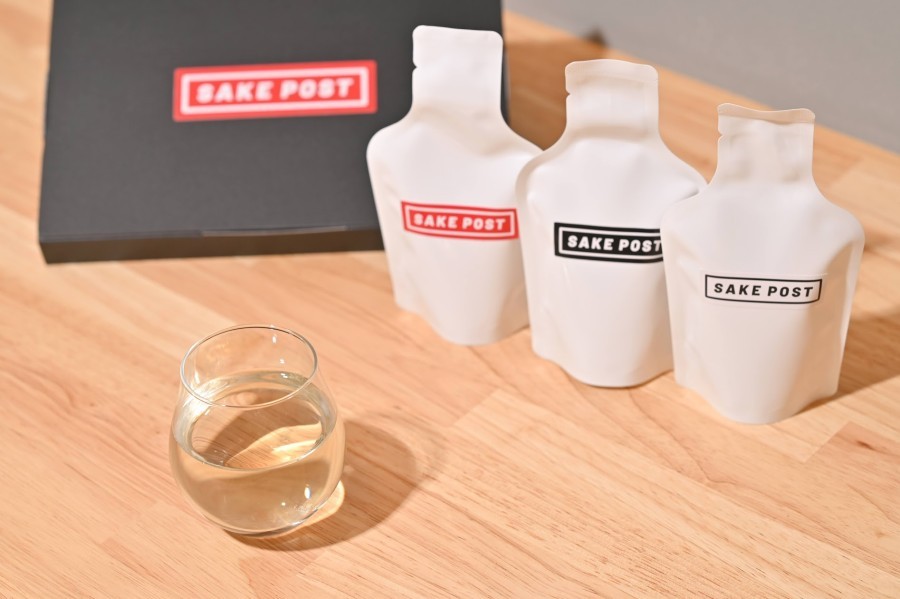The Echigo Nagaoka Machi Meguri bus tour was held in Nagaoka City, and I participated in the 25 October tour of the Nakanoshima and Tochio regions. This tour is an attempt to find links between two of the regions that merged extensively as a result of the Heisei merger, by linking them together under a common theme. The tour is an attempt to find links between the two regions, which have merged in the Heisei Great Merger, by linking them together under a common theme. This is a tour of places that cannot be seen on ordinary sightseeing tours, and that will allow you to make new discoveries.
![Participation in the [Echigo Nagaoka, Town Tour] to experience history and culture through the](https://niigata-repo.com/wp-content/uploads/2014/11/IMGP4837-546x361.jpg)
On this sunny autumn day, the project connects the seemingly remote regions of Nakanoshima and Tochio. The two regions have one thing in common: life around the Kariyada River. We will embark on a journey that will take us upstream and downstream of the Kariyada River to experience the wisdom of life brought about by the history and culture associated with the river. The schedule for the day is as follows: in the morning we will visit the Nakanoshima area and in the afternoon the Tochio area.
- Assembly: 8:30am.
- [Morning] Nakanoshima area "Guided tour of the Kariyata River from a car window" - "Ohtake Residence Memorial Hall" - "Yomoshichi Jizo" - "Irisawa Memorial Garden".
- Lunch] "Drive-in Kariyata", Tochio area.
- Afternoon] Tochio area "Kariyata River Dam" - "Tochibori walk, Nusumori-jinja Shrine" - "Roadside Station R290 Tochio".
- Dismissal 16:00.
(1) Nakanoshima, 'Guided tour of the Kariyata River from a train window'.
![Participation in the [Echigo Nagaoka, Town Tour] to experience history and culture through the](https://niigata-repo.com/wp-content/uploads/2014/11/IMGP4839-546x361.jpg)
The bus first toured the Nakanoshima area. Before the merger, Nakanoshima was a town located between Nagaoka and Mitsuke. It is a very flood-prone area, an 'island' between the Shinano and Kariyata Rivers. The town's history is a battle against flooding. It is said that "there are often years when there is rice planting but no harvesting", and that in the past the land was flooded once every three years and the water would not recede for 20 or 30 days".
![Participation in the [Echigo Nagaoka, Town Tour] to experience history and culture through the](https://niigata-repo.com/wp-content/uploads/2014/11/IMGP4848-546x361.jpg)
The volunteer guide will tell you the story of the Kariyata River Weir, built in 1655, which was a historical structure that fulfilled the long-cherished wish of farmers who were plagued by flooding.
(ii) Nakanoshima, 'Ohtake Residence Memorial Hall'.
![Participation in the [Echigo Nagaoka, Town Tour] to experience history and culture through the](https://niigata-repo.com/wp-content/uploads/2014/11/IMGP4860-546x361.jpg)
A great man born in Nakanoshima, which suffered from such flooding, was Kanichi Ohtake. Do you know him? Along with Kakuei Tanaka, he is one of Niigata Prefecture's leading politicians.
![Participation in the [Echigo Nagaoka, Town Tour] to experience history and culture through the](https://niigata-repo.com/wp-content/uploads/2014/11/IMGP4870-546x361.jpg)
![Participation in the [Echigo Nagaoka, Town Tour] to experience history and culture through the](https://niigata-repo.com/wp-content/uploads/2014/11/IMGP4884-546x361.jpg)
The birthplace of Kanichi Otake is now open to the public as the Otake Residence Memorial Hall. Until his death in 1944 (Showa 1944), he devoted himself to local flood control projects and was also known as the 'God of Flood Control'. The Kariyata River Weir, seen from the bus earlier, and the Okawazu Diversion, which is representative of Niigata, were realised thanks to Kanichi Otake, who refused the offer to become a minister and pushed for flood control in his home town, and is praised for his achievements.
![Participation in the [Echigo Nagaoka, Town Tour] to experience history and culture through the](https://niigata-repo.com/wp-content/uploads/2014/11/IMGP4876-546x361.jpg)
![Participation in the [Echigo Nagaoka, Town Tour] to experience history and culture through the](https://niigata-repo.com/wp-content/uploads/2014/11/IMGP4896-546x361.jpg)
![Participation in the [Echigo Nagaoka, Town Tour] to experience history and culture through the](https://niigata-repo.com/wp-content/uploads/2014/11/IMGP4916-546x361.jpg)
Incidentally, in the garden of the Ohtake Residence Memorial Hall, there is a pond shrine dedicated to Taira Yorimori, who is said to be the founder of the Nakanoshima area; Taira Yorimori settled there in 1199 after fleeing from the capital, and his chief vassals developed Nakanoshima.
![Participation in the [Echigo Nagaoka, Town Tour] to experience history and culture through the](https://niigata-repo.com/wp-content/uploads/2014/11/IMGP4878-546x361.jpg)
There are also gems of origin in the memorial hall.
Nakanoshima and Shigeru Shichi Jizo.
![Participation in the [Echigo Nagaoka, Town Tour] to experience history and culture through the](https://niigata-repo.com/wp-content/uploads/2014/11/IMGP4934-546x361.jpg)
Next came the Yomoshichi Jizo, which enshrines the righteous person 'Otake Yomoshichi', who was executed for a crime he did not commit.
![Participation in the [Echigo Nagaoka, Town Tour] to experience history and culture through the](https://niigata-repo.com/wp-content/uploads/2014/11/IMGP4922-546x361.jpg)
![Participation in the [Echigo Nagaoka, Town Tour] to experience history and culture through the](https://niigata-repo.com/wp-content/uploads/2014/11/IMGP4929-546x361.jpg)
This is the tragic story of Yomoshichi, who worked for the people in the Nakanoshima area during the Edo period, which was plagued by heavy flooding, and is passed down as an episode that conveys the suffering of flooding in the area.
Irisawa Memorial Garden, ④Nakanoshima Island
![Participation in the [Echigo Nagaoka, Town Tour] to experience history and culture through the](https://niigata-repo.com/wp-content/uploads/2014/11/IMGP4943-546x361.jpg)
Perhaps because Nakanoshima suffered from floods, or perhaps because they wanted people to be able to eat without depending on the land, from the end of the Edo period to the beginning of the Showa period, they produced a succession of medical doctors who were to break Japan. That is the Irisawa family.
![Participation in the [Echigo Nagaoka, Town Tour] to experience history and culture through the](https://niigata-repo.com/wp-content/uploads/2014/11/IMGP4959-546x361.jpg)
![Participation in the [Echigo Nagaoka, Town Tour] to experience history and culture through the](https://niigata-repo.com/wp-content/uploads/2014/11/IMGP4941-546x361.jpg)
Ritsukichi, the eldest son of Kyohei Irizawa, was a great man who served as a professor at Tokyo Imperial University, director of the medical school attached to Tokyo Imperial University, dean of the university's medical school and chief physician to the Imperial Household Ministry! I didn't know such a person came from Nakanoshima. ......
(v) 'Nakanoshima bus walk - Patio Niigata'.
![Participation in the [Echigo Nagaoka, Town Tour] to experience history and culture through the](https://niigata-repo.com/wp-content/uploads/2014/11/IMGP4974-546x361.jpg)
The bus then took a break at Patio Niigata to see the current confluence of the Kariyata and Shinano Rivers, where three rivers of different heights flow side by side for drainage, and the Rokkesho Jizo, which protects children from water hazards.
![Participation in the [Echigo Nagaoka, Town Tour] to experience history and culture through the](https://niigata-repo.com/wp-content/uploads/2014/11/IMGP4978-546x361.jpg)
Nakanon, Nakanoshima's loose character, and Micke, Mitsuke's character, welcomed us!
This roadside station Patio Niigata was built on reclaimed land after the meandering Kariyata River was straightened, and was constructed after the 7.13 flood in 2005, so it also plays a role as a base for disaster management. It is not just a tourist facility, but has a background that was born on this land.
6) [Lunch] Tochio area, "Drive-in Kariyata".
![Participation in the [Echigo Nagaoka, Town Tour] to experience history and culture through the](https://niigata-repo.com/wp-content/uploads/2014/11/IMGP5003-546x361.jpg)
Now, one of the things to look forward to on the tour is a lunch that makes the most of local specialities! This time, we enjoyed a packed lunch full of wild vegetables at Drive-in Kariyata in the Tochio region!
![Participation in the [Echigo Nagaoka, Town Tour] to experience history and culture through the](https://niigata-repo.com/wp-content/uploads/2014/11/IMGP4990-546x361.jpg)
![Participation in the [Echigo Nagaoka, Town Tour] to experience history and culture through the](https://niigata-repo.com/wp-content/uploads/2014/11/IMGP4993-546x361.jpg)
A veritable feast of wild vegetables!
![Participation in the [Echigo Nagaoka, Town Tour] to experience history and culture through the](https://niigata-repo.com/wp-content/uploads/2014/11/IMGP4994-546x361.jpg)
Of course, Tochio is also known for its fried tofu! And what's more, this time ......
![Participation in the [Echigo Nagaoka, Town Tour] to experience history and culture through the](https://niigata-repo.com/wp-content/uploads/2014/11/IMGP4986-546x361.jpg)
Hidenobu Takahashi from Nakanoshima, who appeared in the Nagaoka City episode of NHK's 'Kitchen Runs', served up his pride and joy, 'Oguchi Renkon'! A gem of a dish, simply grilled lotus root in soy sauce! Yummmm!
![Participation in the [Echigo Nagaoka, Town Tour] to experience history and culture through the](https://niigata-repo.com/wp-content/uploads/2014/11/IMGP4995-546x361.jpg)
(vii) Tochio 'Kariyata River Dam'.
![Participation in the [Echigo Nagaoka, Town Tour] to experience history and culture through the](https://niigata-repo.com/wp-content/uploads/2014/11/IMGP4998-546x361.jpg)
In the afternoon, the tour will visit the Tochio area. The first stop was the Kariyata River Dam, which can be seen from the Drive-in Kariyata. Completed in 1980, the dam was a long-held dream for residents of the Tochio and Nakanoshima regions, where the Kariyata River has suffered severe damage from heavy flooding caused by torrential rainfall and other factors.
![Participation in the [Echigo Nagaoka, Town Tour] to experience history and culture through the](https://niigata-repo.com/wp-content/uploads/2014/11/IMGP5008-546x361.jpg)
This time, we actually spoke to the management office.
![Participation in the [Echigo Nagaoka, Town Tour] to experience history and culture through the](https://niigata-repo.com/wp-content/uploads/2014/11/IMGP5029-546x361.jpg)
Elevator down from the dam: ......
![Participation in the [Echigo Nagaoka, Town Tour] to experience history and culture through the](https://niigata-repo.com/wp-content/uploads/2014/11/IMGP5037-546x361.jpg)
Through a tunnel in the dam. ......
![Participation in the [Echigo Nagaoka, Town Tour] to experience history and culture through the](https://niigata-repo.com/wp-content/uploads/2014/11/IMGP5044-546x361.jpg)
We are now at the foot of the dam looking up at it. It's huge!
![Participation in the [Echigo Nagaoka, Town Tour] to experience history and culture through the](https://niigata-repo.com/wp-content/uploads/2014/11/IMGP5050-546x361.jpg)
Looking up at the large dam, I realised the hard work that went into its construction and the importance of flood control and flood prevention in a man-made structure that has been torn out of the wilderness.
![Participation in the [Echigo Nagaoka, Town Tour] to experience history and culture through the](https://niigata-repo.com/wp-content/uploads/2014/11/IMGP5058-546x361.jpg)
![Participation in the [Echigo Nagaoka, Town Tour] to experience history and culture through the](https://niigata-repo.com/wp-content/uploads/2014/11/IMGP5064-546x361.jpg)
And on the way back, we went through a long tunnel and down the canyon where the dam used to be. It was quite a rare opportunity to walk in such a place!
⑧Tochio "Tochibori Sansei" (Tochigobori Sansei)
![Participation in the [Echigo Nagaoka, Town Tour] to experience history and culture through the](https://niigata-repo.com/wp-content/uploads/2014/11/IMGP5068-546x361.jpg)
Afterwards, a walk around the Tochibori area. Tochibori is a historic place where Uesugi Kenshin, a leading military commander of the Warring States period, spent his childhood and youth. Legend has it that Minamoto no Yoshitsune's mistress Shizuka Gozen is buried here, and that Nasu Yoichi lived here.
Tochio is also the area with the highest number of roadside deities.
![Participation in the [Echigo Nagaoka, Town Tour] to experience history and culture through the](https://niigata-repo.com/wp-content/uploads/2014/11/IMGP5073-546x361.jpg)
![Participation in the [Echigo Nagaoka, Town Tour] to experience history and culture through the](https://niigata-repo.com/wp-content/uploads/2014/11/IMGP5079-546x361.jpg)
![Participation in the [Echigo Nagaoka, Town Tour] to experience history and culture through the](https://niigata-repo.com/wp-content/uploads/2014/11/IMGP5080-546x361.jpg)
![Participation in the [Echigo Nagaoka, Town Tour] to experience history and culture through the](https://niigata-repo.com/wp-content/uploads/2014/11/IMGP5084-546x361.jpg)
The Tochibori area we walked around is an old village, with many nice old houses. The area is deep in snow, but it was a good walk to enjoy the autumn weather before the snow closes in.
(ix) Tochio 'Nusumori Shrine'.
![Participation in the [Echigo Nagaoka, Town Tour] to experience history and culture through the](https://niigata-repo.com/wp-content/uploads/2014/11/IMGP5086-546x361.jpg)
What we came straight here to is the Tochibori Sushimori Shrine. Tochibori Sushumori Shrine is also the setting for the 'Naked Oshiai Grand Festival'. Every year on the second Saturday of February, men in loincloths lead a large candle and shout "Sanyo! Sanyo!" Osse! Osse! and "Osse!" with men dressed in loincloths leading the procession. The nationally famous Urasa Bishamondo Naked Oshiai Daisai Matsuri is designated as a National Intangible Folk Cultural Asset, but the Tochibori version has the same content but I think the origin is the same.
![Participation in the [Echigo Nagaoka, Town Tour] to experience history and culture through the](https://niigata-repo.com/wp-content/uploads/2014/11/IMGP51241-546x361.jpg)
Climb this stone staircase to ......
![Participation in the [Echigo Nagaoka, Town Tour] to experience history and culture through the](https://niigata-repo.com/wp-content/uploads/2014/11/IMGP51371-546x361.jpg)
A strange festival is held in the main hall, where people compete for 260 good luck cards!
![Participation in the [Echigo Nagaoka, Town Tour] to experience history and culture through the](https://niigata-repo.com/wp-content/uploads/2014/11/IMGP5095-546x361.jpg)
Kiwatari Shrine is located at the side of such a shrine. This shrine enshrines the ancestral god of Tochio pongee. The shrine is characterised by the magnificent carvings in the shrine pavilions! This is the work of Ishikawa Uncho, who has recently attracted attention as the 'Michelangelo of Echigo-Tsumari'.
![Participation in the [Echigo Nagaoka, Town Tour] to experience history and culture through the](https://niigata-repo.com/wp-content/uploads/2014/11/IMGP51051-546x361.jpg)
![Participation in the [Echigo Nagaoka, Town Tour] to experience history and culture through the](https://niigata-repo.com/wp-content/uploads/2014/11/IMGP5099-546x361.jpg)
![Participation in the [Echigo Nagaoka, Town Tour] to experience history and culture through the](https://niigata-repo.com/wp-content/uploads/2014/11/IMGP51161-546x361.jpg)
Ishikawa Uncho was a master woodcarver active in the late Edo period and left many works throughout the prefecture. Uncho is said to be shrouded in mystery, but his overwhelmingly beautiful works are simply amazing! I just looked at them.
10) Tochio "Roadside Station R290 Tochio".
![Participation in the [Echigo Nagaoka, Town Tour] to experience history and culture through the](https://niigata-repo.com/wp-content/uploads/2014/11/IMGP4846-546x361.jpg)
We then went to the roadside station at the end of the tour, listening to the history and climate of Tochio. I feel that there were many parts of Tochio with plenty of history that we did not get around.
![Participation in the [Echigo Nagaoka, Town Tour] to experience history and culture through the](https://niigata-repo.com/wp-content/uploads/2014/11/IMGP51471-546x361.jpg)
the end
Now, a bus tour of the Nakanoshima and Tochio regions, which toured the "Kariyata civilisation" created by the Kariyata River. I could feel that these seemingly remote areas were deeply connected by the same river. In particular, the stories of flood damage in Nakanoshima and the Kariyata Dam gave us a glimpse of how the regions cooperate with each other in terms of disaster prevention. It was a valuable experience for me to be able to enjoy places that I wouldn't normally visit if I came here for sightseeing!
The Echigo Nagaoka Machi Meguri is organised and managed by the Echigo Nagaoka Machi Meguri Executive Committee. If you are interested in participating or have any questions, please check the information of the Echigo Nagaoka Machi Meguri Executive Committee!
- Official facebook page: https://www.facebook.com/pages/%E8%B6%8A%E5%BE%8C%E9%95%B7%E5%B2%A1%E3%81%BE%E3%81%A1%E3%82%81%E3%81%90%E3%82%8A2014 /694356533975334
- Kolite organisation page: http://nkyod.org/group-list/machimeguri
advertisement








